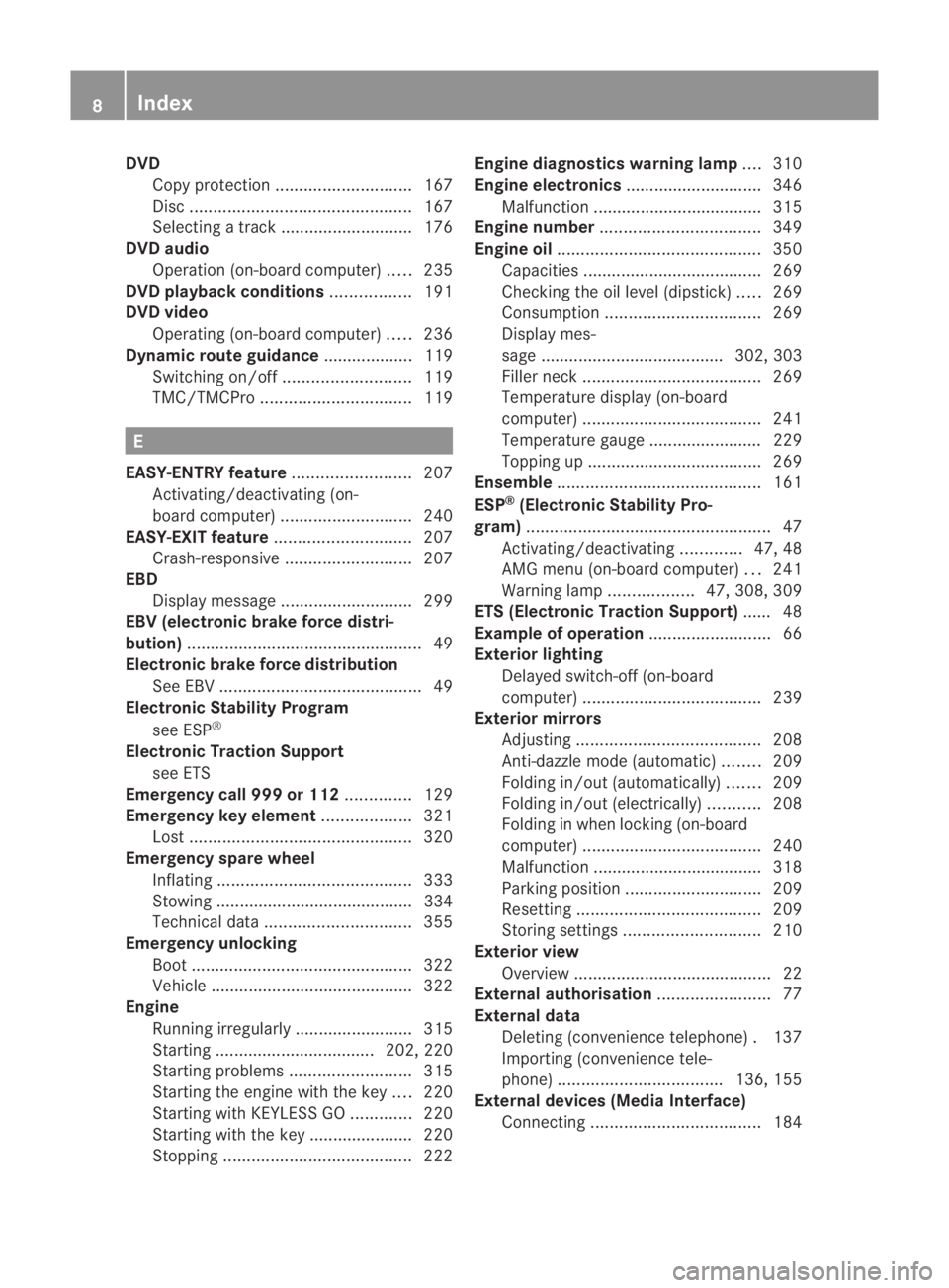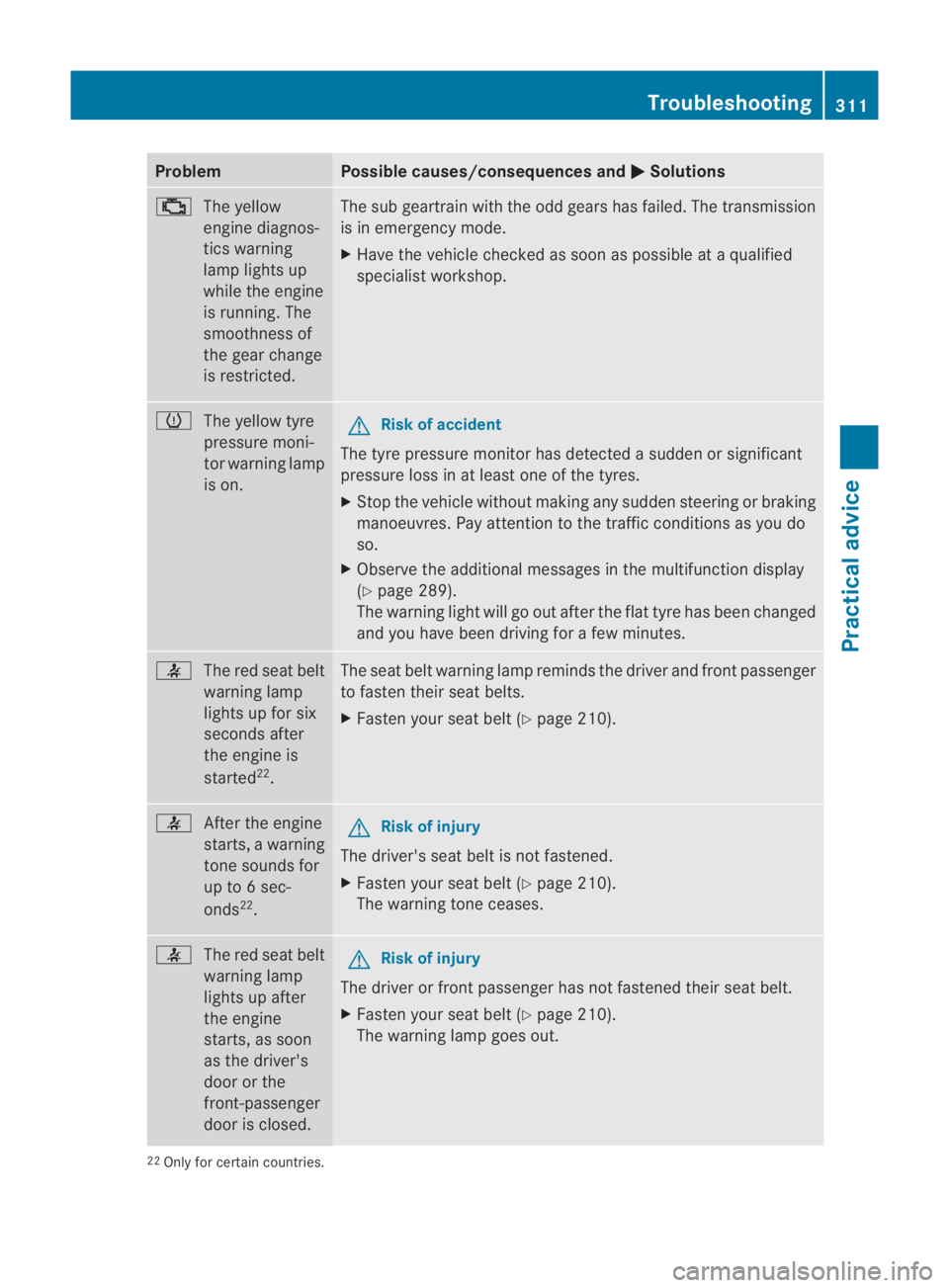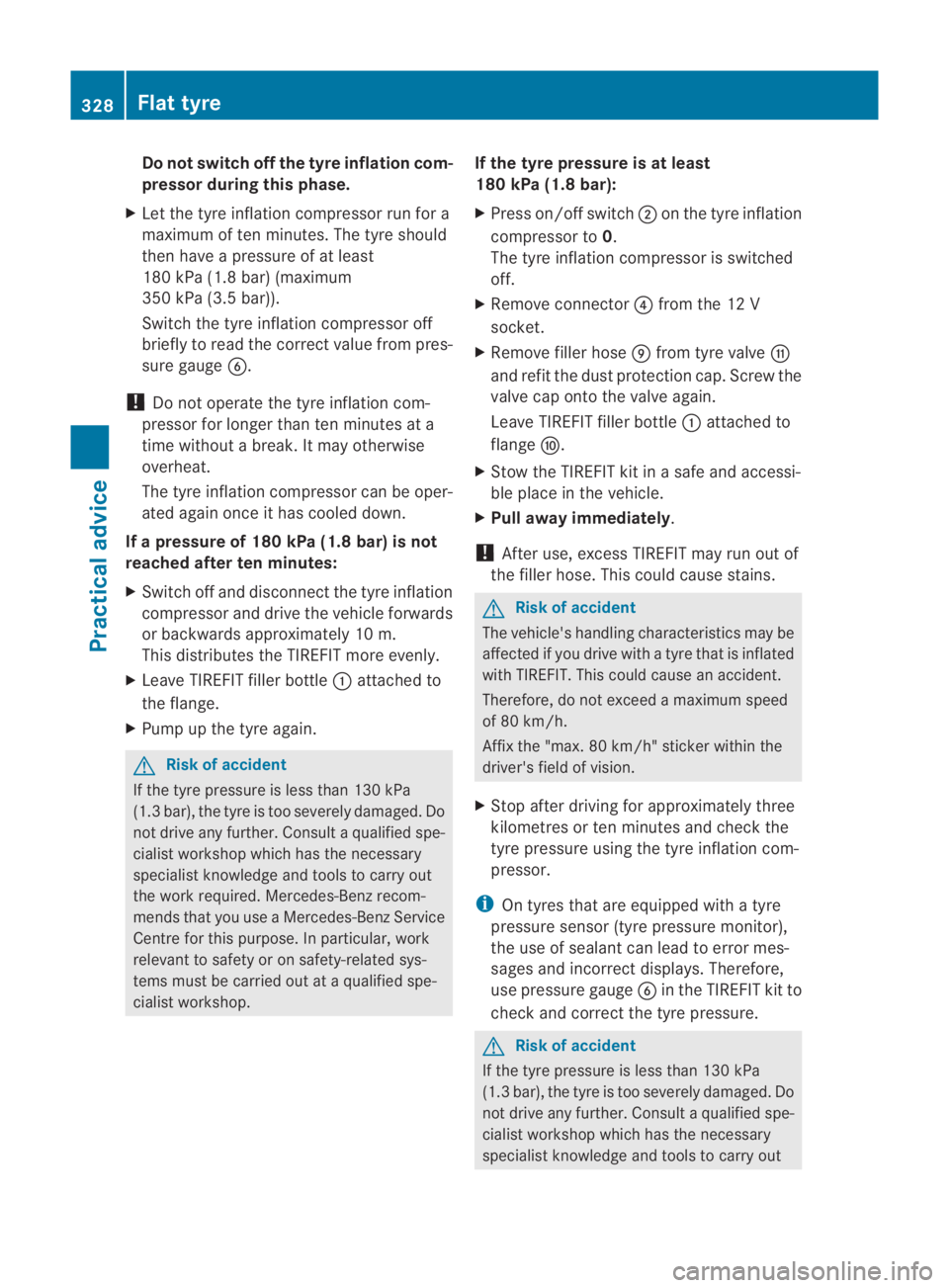2010 MERCEDES-BENZ SLS COUPE run flat
[x] Cancel search: run flatPage 11 of 361

DVD
Copy protection ............................. 167
Disc ............................................... 167
Selecting atrack ............................ 176
DVD audio
Operation (on-board computer) .....235
DVD playbac kconditions ................. 191
DVD video Operating (on-board computer) .....236
Dynamic route guidance ................... 119
Switching on/off ........................... 119
TMC/TMCPro ................................ 119E
EASY-ENTRY feature .........................207
Activating/deactivating (on-
board computer) ............................ 240
EASY-EXIT feature ............................. 207
Crash-responsive ........................... 207
EBD
Display message ............................ 299
EBV (electronic brake force distri-
bution) .................................................. 49
Electronic brake force distribution See EBV ........................................... 49
Electronic Stability Program
see ESP ®
Electronic Traction Support see ETS
Emergency call 999 or 112 ..............129
Emergency key element ...................321
Lost ............................................... 320
Emergency spare wheel
Inflating ......................................... 333
Stowing .......................................... 334
Technical data ............................... 355
Emergency unlocking
Boot ............................................... 322
Vehicle .......................................... .322
Engine
Running irregularl y......................... 315
Starting .................................. 202, 220
Starting problems ..........................315
Starting the engine with the key ....220
Starting with KEYLESS GO .............220
Starting with the key ..................... .220
Stopping ........................................ 222Engine diagnostics warning lamp
....310
Engine electronics .............................346
Malfunction ................................... .315
Engine number .................................. 349
Engine oil ........................................... 350
Capacities ...................................... 269
Checking the oil level (dipstick) .....269
Consumption ................................. 269
Display mes-
sag e....................................... 302, 303
Filler neck ...................................... 269
Temperature display (on-board
computer) ...................................... 241
Temperature gauge ........................ 229
Topping up ..................................... 269
Ensemble ........................................... 161
ESP ®
(Electronic Stability Pro-
gram) .................................................... 47
Activating/deactivating .............47, 48
AMG menu (on-board computer) ...241
Warning lamp ..................47, 308, 309
ETS (Electronic Traction Support) ...... 48
Example of operation ..........................66
Exterior lighting Delayed switch-off (on-board
computer) ...................................... 239
Exterior mirrors
Adjusting ....................................... 208
Anti-dazzle mode (automatic) ........209
Folding in/ou t(automatically) .......209
Folding in/ou t(electrically) ...........208
Folding in whe nlocking (on-board
computer) ...................................... 240
Malfunction ................................... .318
Parking position ............................. 209
Resetting ....................................... 209
Storing settings ............................. 210
Exterior view
Overview .......................................... 22
External authorisation ........................77
External data Deleting (convenience telephone) .137
Importing (convenience tele-
phone )................................... 136, 155
External devices (Media Interface)
Connecting .................................... 1848
Index BA 197 ECE RE 2010/6a; 1; 2, en-GB
sabbae uV ersion: 3.0.3.6
2010-05-07T14:19:43+02:00 - Seite 8
Page 314 of 361

Problem Possible causes/consequences and
0003 Solutions
000A
The yellow
engine diagnos-
tics warning
lamp lights up
while the engine
is running. The
smoothness of
the gear change
is restricted. The sub geartrain with the odd gears has failed. The transmission
is in emergency mode.
X
Have the vehicle checked as soon as possible at a qualified
specialist workshop. 000D
The yellow tyre
pressure moni-
tor warning lamp
is on. G
Risk of accident
The tyre pressure monitor has detected a sudden or significant
pressure loss in at least one of the tyres.
X Stop the vehicle without making any sudden steering or braking
manoeuvres. Pay attention to the traffic conditions as you do
so.
X Observe the additional messages in the multifunction display
(Y page 289).
The warning light will go out after the flat tyre has been changed
and you have been driving for a few minutes. 0019
The red seat belt
warning lamp
lights up for six
seconds after
the engine is
started 22
. The seat belt warning lamp reminds the driver and front passenger
to fasten their seat belts.
X
Fasten your seat belt (Y page 210).0019
After the engine
starts, a warning
tone sounds for
up to 6 sec-
onds22
. G
Risk of injury
The driver's seat belt is not fastened.
X Fasten your seat belt (Y page 210).
The warning tone ceases. 0019
The red seat belt
warning lamp
lights up after
the engine
starts, as soon
as the driver's
door or the
front-passenger
door is closed. G
Risk of injury
The driver or front passenger has not fastened their seat belt.
X Fasten your seat belt (Y page 210).
The warning lamp goes out. 22
Only for certain countries. Troubleshooting
311Practical advice
BA 197 ECE RE 2010/6a; 1; 2, en-GB
sabbaeu Version: 3.0.3.6 2010-05-07T14:19:43+02:00 - Seite 311 Z
Page 331 of 361

Do not switch off the tyre inflation com-
pressor during this phase.
X Let the tyre inflation compressor run for a
maximum of te nminutes. The tyre should
the nhave a pressure of at least
180 kPa (1.8 bar) (maximum
350 kPa (3.5 bar)).
Switch the tyre inflation compressor off
briefly to read the correct value from pres-
sure gauge 0013.
! Do not operate the tyre inflation com-
pressor for longer than ten minutes at a
time without a break .Itmay otherwise
overheat.
The tyre inflation compressor can be oper-
ated again once it has cooled down.
If a pressure of 180 kPa (1.8 bar) is not
reached after ten minutes:
X Switch off and disconnect the tyre inflation
compressor and drive the vehicle forwards
or backwards approximately 10 m.
This distributes the TIREFIT more evenly.
X Leave TIREFIT fille rbottle 0001attached to
the flange.
X Pump up the tyre again. G
Risk of accident
If the tyre pressure is less than 130 kPa
(1.3 bar), the tyre is too severely damaged. Do
not drive any further. Consult a qualified spe-
cialist workshop which has the necessary
specialist knowledge and tools to carry out
the work required. Mercedes-Benz recom-
mends that you use a Mercedes-Benz Service
Centre for this purpose. In particular, work
relevant to safety or on safety-related sys-
tems must be carried out at a qualified spe-
cialist workshop. If the tyre pressure is at least
180 kPa (1.8 bar):
X
Press on/offs witch0002on the tyre inflation
compressor to 0.
The tyre inflatio ncompressor is switched
off.
X Remove connector 0014from the 12 V
socket.
X Remove filler hose 000Cfrom tyre valve 000E
and refit the dust protection cap. Screw the
valve cap onto the valve again.
Leave TIREFIT filler bottle 0001attached to
flange 000D.
X Stow the TIREFIT kit in a safe and accessi-
ble place in the vehicle.
X Pull away immediately.
! After use, excess TIREFIT may run out of
the filler hose. This could cause stains. G
Risk of accident
The vehicle's handling characteristics may be
affected if you drive with a tyre that is inflated
with TIREFIT. This could cause an accident.
Therefore, do not exceed amaximum speed
of 80 km/h.
Affix th e"max. 80 km/h" sticker within the
driver's field of vision.
X Stop after driving for approximately three
kilometres or ten minutes and check the
tyre pressure using the tyre inflation com-
pressor.
i On tyres that are equipped with a tyre
pressure sensor (tyre pressure monitor),
the use of sealant can leadt o error mes-
sages and incorrect displays. Therefore,
use pressure gauge 0013in the TIREFIT kit to
check and correct the tyre pressure. G
Risk of accident
If the tyre pressure is less than 130 kPa
(1.3 bar), the tyre is too severely damaged. Do
not drive any further. Consult a qualified spe-
cialist workshop which has the necessary
specialist knowledge and tools to carry out 328
Flat tyrePractical advice
BA 197 ECE RE 2010/6a; 1; 2, en-GB
sabbaeu
Version: 3.0.3.6 2010-05-07T14:19:43+02:00 - Seite 328